MSI Z87I Review: Mini-ITX Haswell for $140
by Ian Cutress on August 27, 2013 10:15 AM EST- Posted in
- Motherboards
- MSI
- Mini ITX
- Z87
Metro2033
Our first analysis is with the perennial reviewers’ favorite, Metro2033. It occurs in a lot of reviews for a couple of reasons – it has a very easy to use benchmark GUI that anyone can use, and it is often very GPU limited, at least in single GPU mode. Metro2033 is a strenuous DX11 benchmark that can challenge most systems that try to run it at any high-end settings. Developed by 4A Games and released in March 2010, we use the inbuilt DirectX 11 Frontline benchmark to test the hardware at 1440p with full graphical settings. Results are given as the average frame rate from a second batch of 4 runs, as Metro has a tendency to inflate the scores for the first batch by up to 5%.
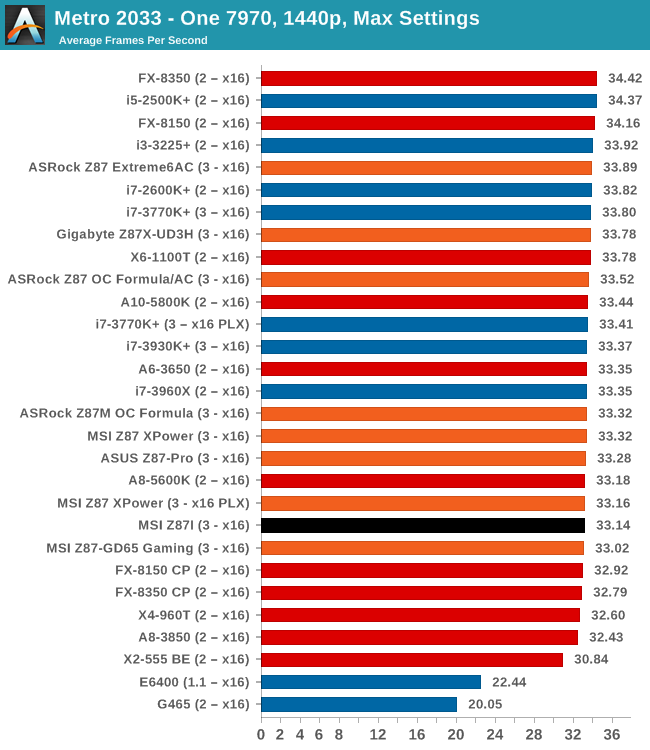
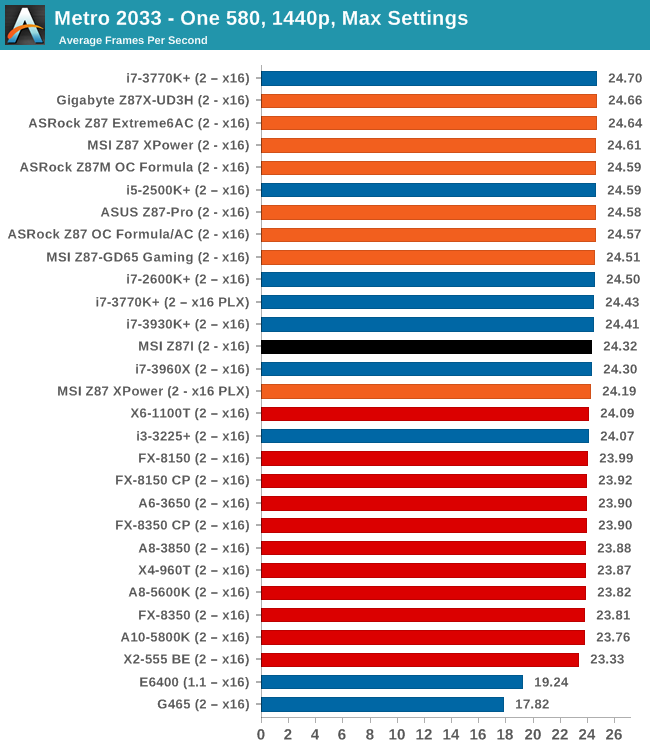
Dirt 3
Dirt 3 is a rallying video game and the third in the Dirt series of the Colin McRae Rally series, developed and published by Codemasters. Dirt 3 also falls under the list of ‘games with a handy benchmark mode’. In previous testing, Dirt 3 has always seemed to love cores, memory, GPUs, PCIe lane bandwidth, everything. The small issue with Dirt 3 is that depending on the benchmark mode tested, the benchmark launcher is not indicative of game play per se, citing numbers higher than actually observed. Despite this, the benchmark mode also includes an element of uncertainty, by actually driving a race, rather than a predetermined sequence of events such as Metro 2033. This in essence should make the benchmark more variable, but we take repeated in order to smooth this out. Using the benchmark mode, Dirt 3 is run at 1440p with Ultra graphical settings. Results are reported as the average frame rate across four runs.
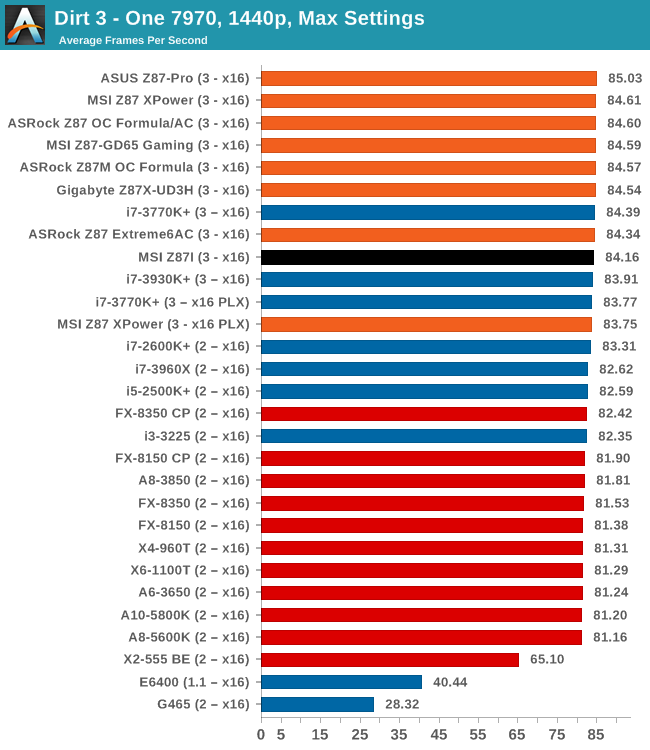
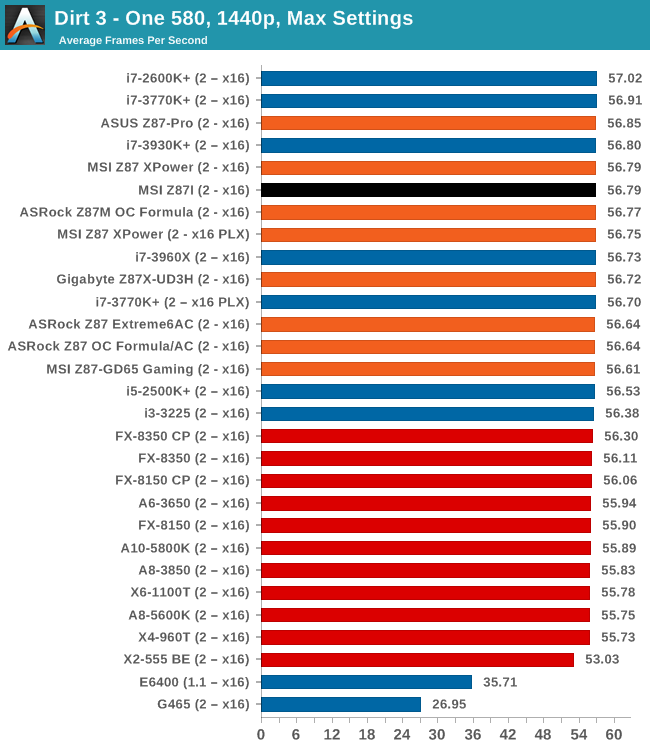
Civilization V
A game that has plagued my testing over the past twelve months is Civilization V. Being on the older 12.3 Catalyst drivers were somewhat of a nightmare, giving no scaling, and as a result I dropped it from my test suite after only a couple of reviews. With the later drivers used for this review, the situation has improved but only slightly, as you will see below. Civilization V seems to run into a scaling bottleneck very early on, and any additional GPU allocation only causes worse performance.
Our Civilization V testing uses Ryan’s GPU benchmark test all wrapped up in a neat batch file. We report the average frame rate of a 5 minute test.

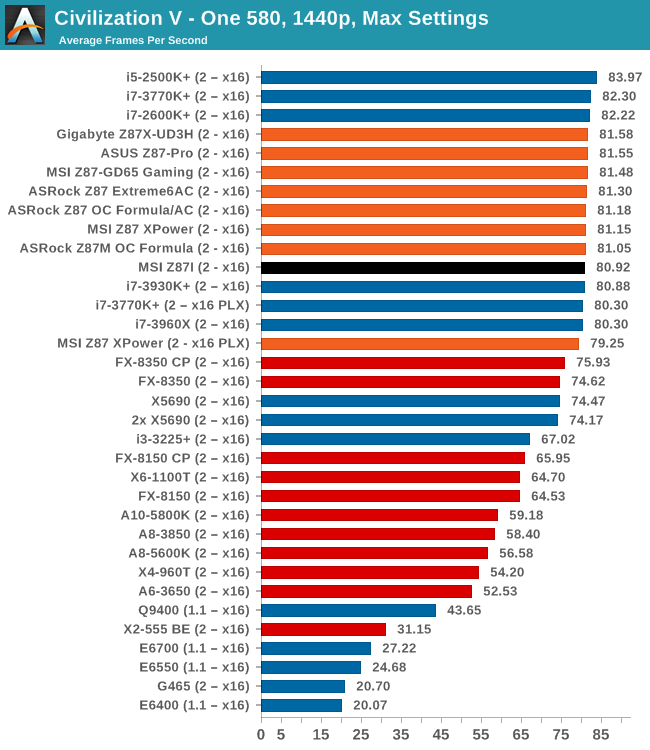
Sleeping Dogs
While not necessarily a game on everybody’s lips, Sleeping Dogs is a strenuous game with a pretty hardcore benchmark that scales well with additional GPU power due to its SSAA implementation. The team over at Adrenaline.com.br is supreme for making an easy to use benchmark GUI, allowing a numpty like me to charge ahead with a set of four 1440p runs with maximum graphical settings.
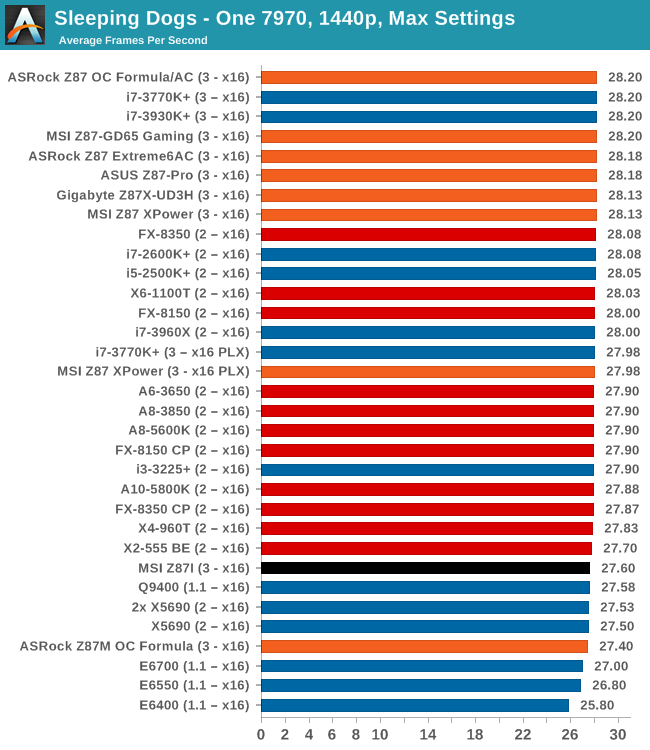
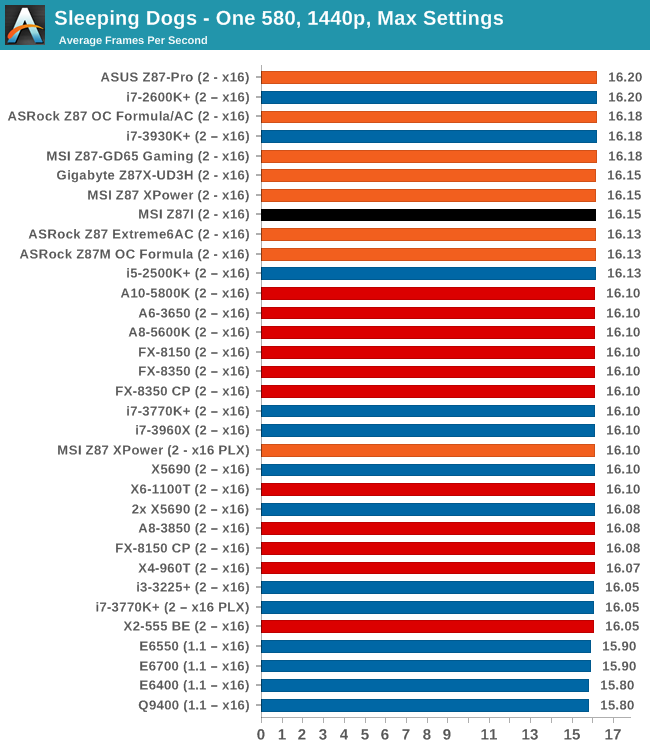
GPU Conclusions
Despite the computational discrepancies we have seen on the Z87I, the gaming benchmarks perform well – very few of our benchmarks show much difference when dealing with a single discrete GPU at 1440p. The only ‘low’ result is perhaps Sleeping Dogs using a 7970, although the difference between 27.60 FPS and 28.10 FPS will not be noticeable.










46 Comments
View All Comments
kwrzesien - Tuesday, August 27, 2013 - link
I'm confused by their choice of cheap wifi and dual Realtec NICs. So can the wifi board be removed and replaced with mSATA SSD? For example for a wired HTPC setup? Is it easy to find replacement mimo or 802.11ac board?Meaker10 - Tuesday, August 27, 2013 - link
Yes it's the same slot notebooks use so you can get any chipset you want from the kilker 1202 t9 theintek 7260ac. They are also pretty cheap to pick up.fritodorito - Wednesday, August 28, 2013 - link
How well will the 2.4 GHz antennas work for the 5 GHz band?DMisner - Tuesday, August 27, 2013 - link
The wifi board is mini pci-e, not msatabobbozzo - Tuesday, August 27, 2013 - link
No one said otherwise.mSATA SSD's typically go into mini PCIe slots.
Meaker10 - Tuesday, August 27, 2013 - link
Incorrect. While msata and mini pci-e are the same physically they are not electrically compatible so a slot can be designed to either take a mini pcie card or msata but can't take the other.chubbypanda - Tuesday, August 27, 2013 - link
Just to make it clear: mSATA and mini PCIe are indeed electrically compatible.Samus - Wednesday, August 28, 2013 - link
I think they could cram a lot more onto these boards (like another mPCIe slot) if they shrunk the socket area and forced you to use water cooling, something most people buying this board are likely to do anyway.1Angelreloaded - Thursday, August 29, 2013 - link
I like the vertical design Asus chose, If you can't build out why not up.Hrel - Tuesday, September 3, 2013 - link
Water cooling is stupid.